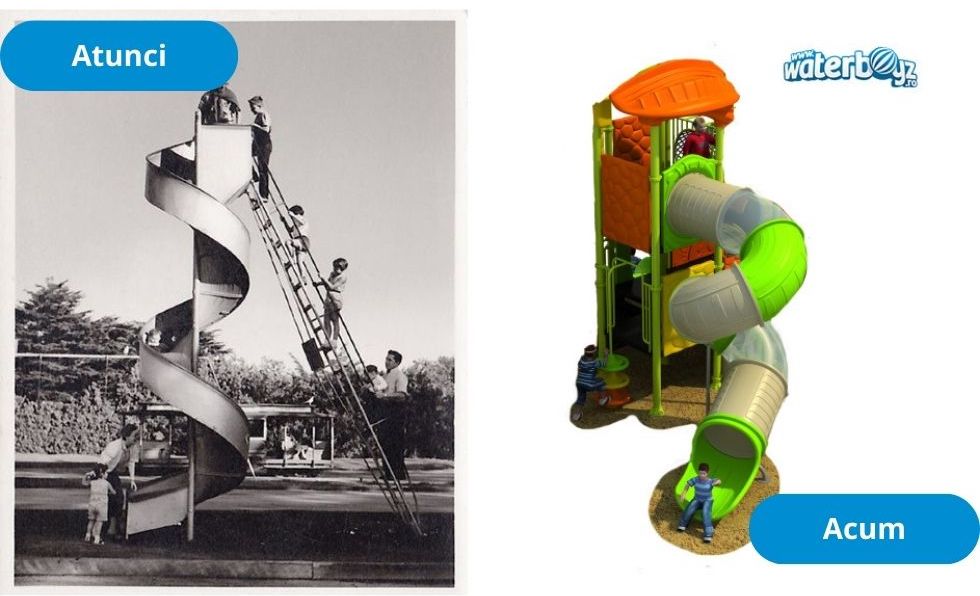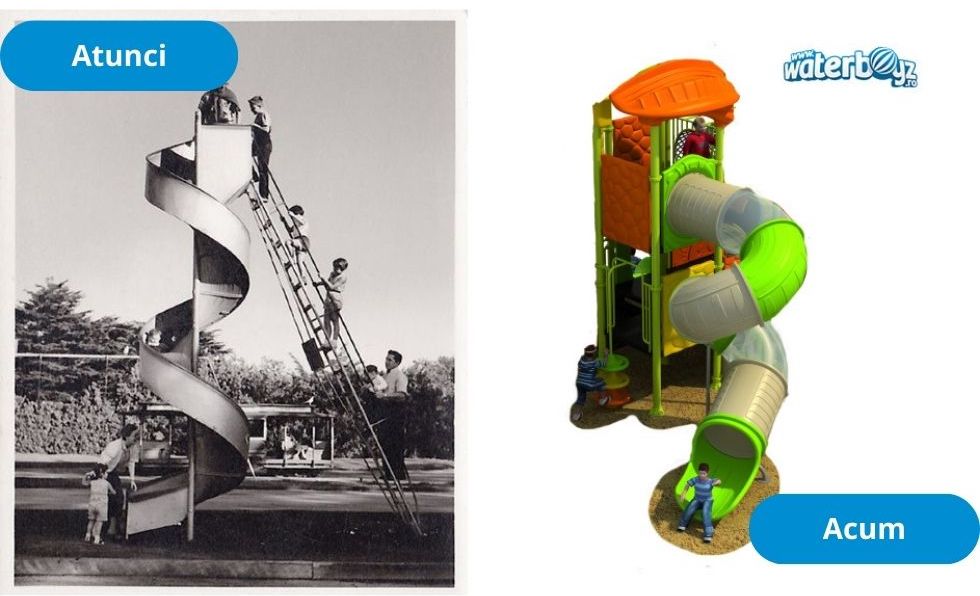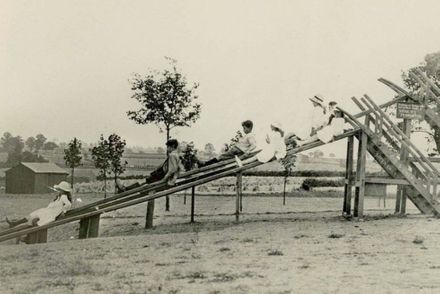Play has distant origins, and we can assert that with the first child, the first game also appeared! These games have evolved, changed, and enriched until, in the year 1859, the first official playground appeared in Germany, being a concept created to satisfy children's need for entertainment in a specially designed setting. However, in those times, there were no advanced means to ensure this safety.
Playgrounds have evolved over time, maintaining the same basic functions (climbing, sliding, spinning), but greatly improved and supplemented with new games, such as trampolines and interactive elements. The most important factor we can observe when looking at a photograph depicting a playground from the past is the fragile safety they offered to children.
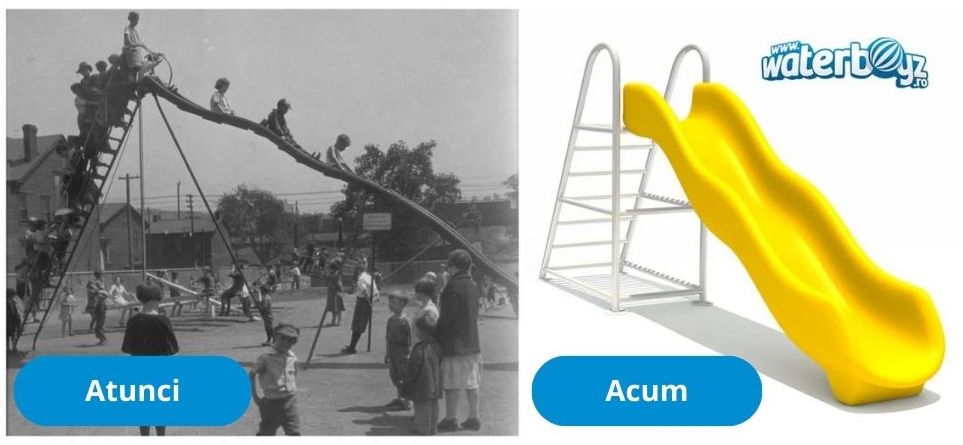
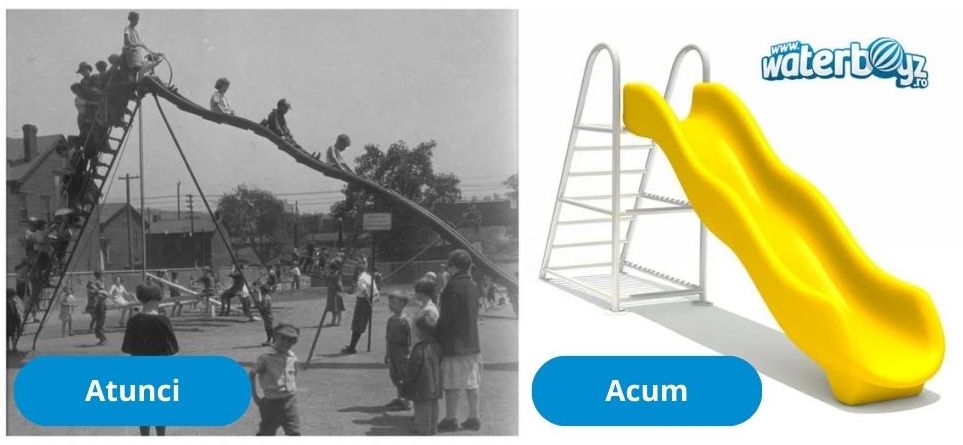
Safer Playground Equipment Nowadays
Over the years, playground equipment designers have done their utmost to ensure that the elements not only provide fun but also ensure that potential accidents are avoided as much as possible.
Slides and Carousels
Slides used to be excessively tall, with absolutely no safety edges. A wrong move and a disastrous accident could occur right before the eyes of children and parents.
This carousel from 1915 was constructed from metal and wood. Stronger kids would spin the carousel, while the others would sit on its platform. Accidents were common, with many children getting scrapes and bruises due to the speed at which it spun.
Due to the hard and heavy materials from which these spinners were made, stopping them from spinning was very difficult and, due to the force involved, often resulted in serious accidents. Nowadays, carousels are designed with rounded edges and have handles or supports that children can hold onto to prevent slipping. They are also much more stable and controllable.
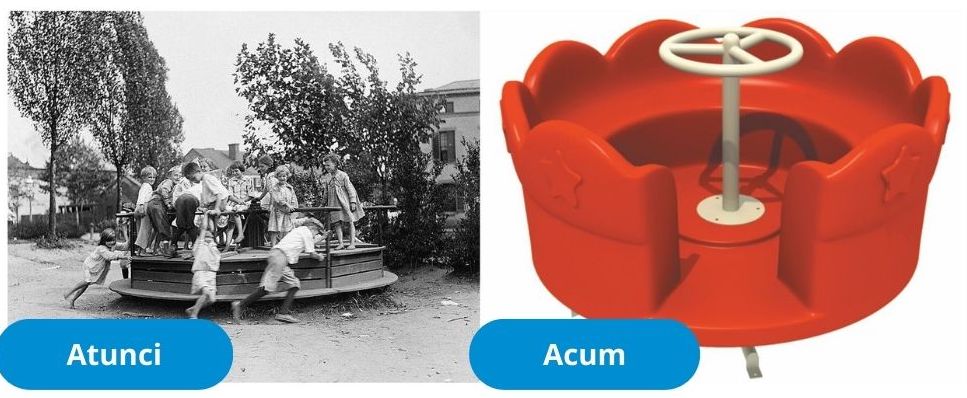
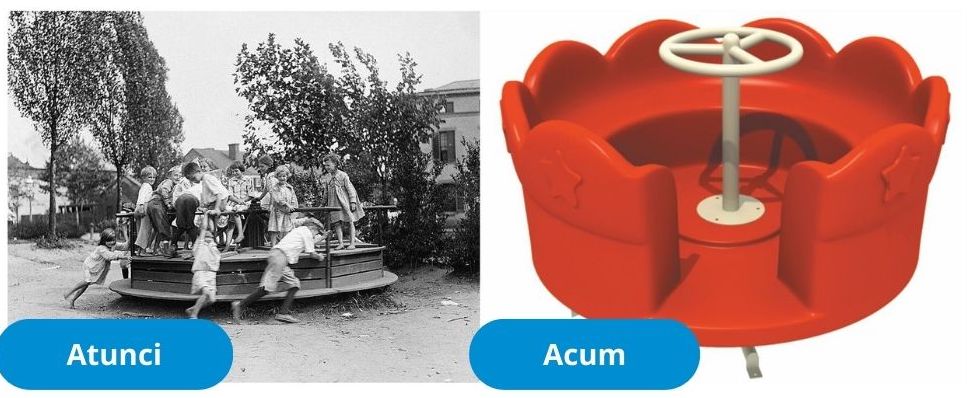
Swings and Climbing Systems
The climbing unit called the "witch's hat" used to spin while the kids hung onto the railings. It was banned 30 years ago due to serious accidents that occurred during its operation. Modern climbing systems today are built so that children have much greater stability and can climb without worries.
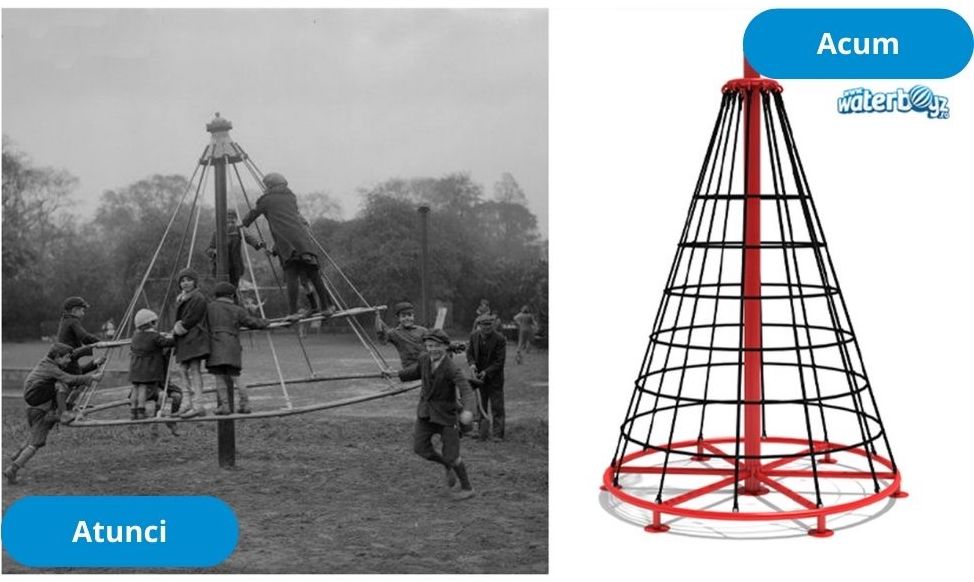
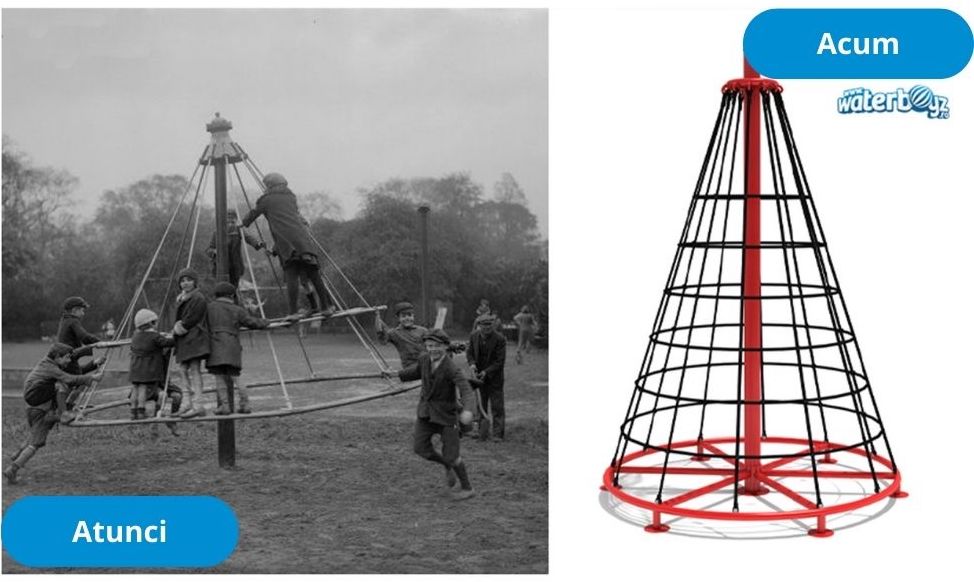
The most well-known and sought-after playground element - the swing!
It used to be placed at dizzying heights, consisting of simple planks attached with chains. One of the most common dangers was swinging too high, leading to numerous falls. Children even engaged in extremely dangerous competitions, flipping over the swing. Modern swings are made from lightweight and safe materials, designed to ensure maximum safety during play.
In past centuries, the greater the danger and height, the more fun the parks were! In the first image, we can see a child who appears to be falling. This photograph sparked a lot of controversy online because it seemed to depict a catastrophic event. It was later revealed that the child was actually on a swing. Nevertheless, playground equipment from the past was extremely hazardous, with any misstep resulting in a serious accident.
We are glad that playground construction techniques have evolved, and now our children can have fun in safe and hazard-free places! At Waterboyz, you can find only products that adhere to safety standards, with certificates such as TUV, TSE, and EN 1176.
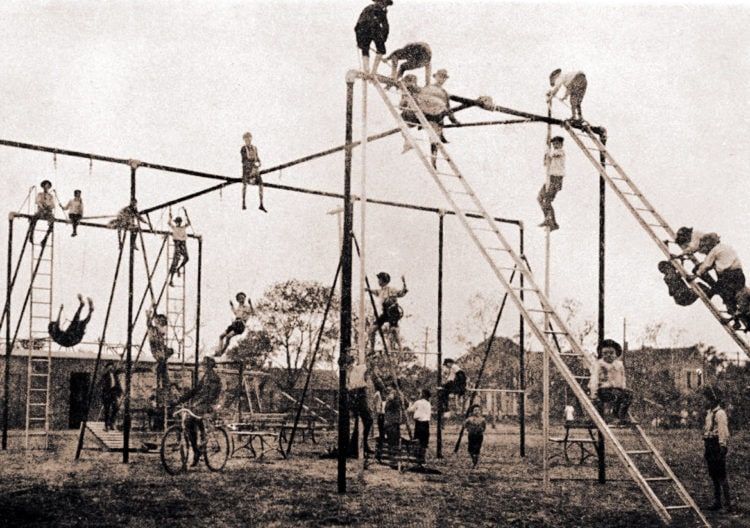
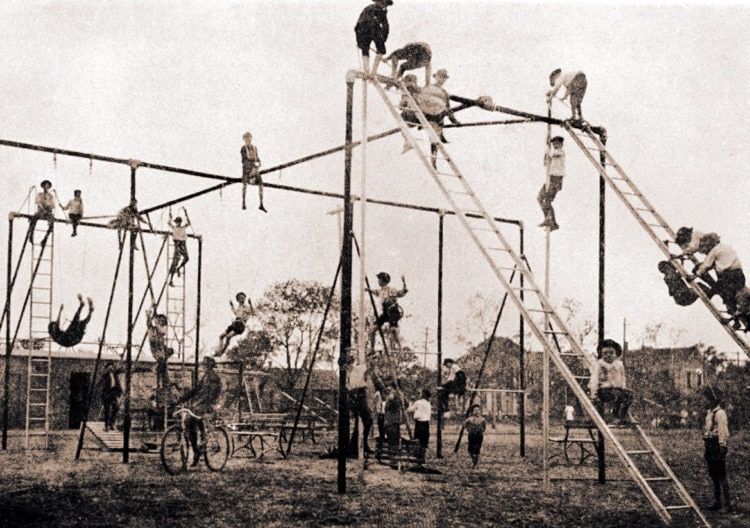
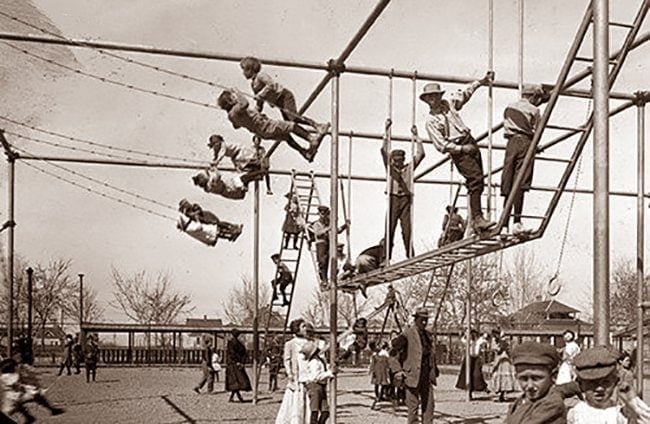
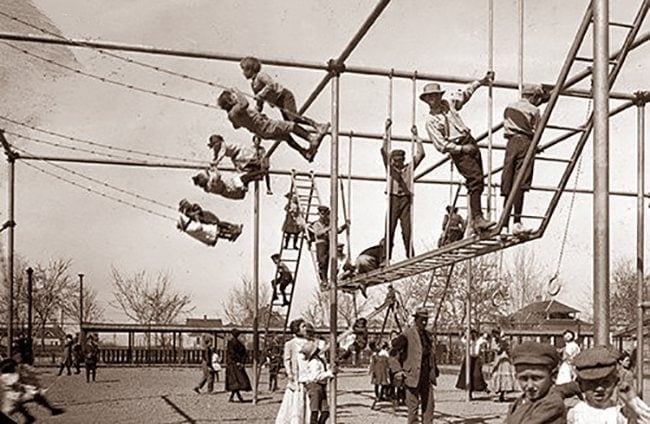
The current equipment offer is extremely diverse.
Unlike the playground equipment of the past, the latest generation offers an extensive list of options, tailored to any budget or available space for such an arrangement. The playgrounds of those who spent their childhood in the 20th century were mainly swings, slides, and simple climbers.
Today, modern playgrounds offer a much wider variety of interactive equipment that stimulates the creativity and physical development of children. The high level of safety they provide is just one of the important features of this equipment. However, they also stand out for:
1. Durability: Modern playground equipment is made from materials that are resistant to wear and weather. Among the most commonly used materials are galvanized steel, aluminum, and reinforced plastic (for basic structures), or elements made of heat-treated wood or pressure-treated wood (e.g., hardwood or tropical wood).
2. Sustainability: When designing playgrounds, consideration is now given to their impact on the environment. Care for a sustainable future is evident in the choice of eco-friendly materials, such as recycled plastic. Discover the latest sustainable products from Waterboyz Romania's offering and learn more about their importance in play spaces.
3. Aesthetics: The newest playground equipment can also be chosen based on the theme of a specific space. For example, if you are creating a playground in a mountain area, equipment with wooden structures can be a solution to consider. For playgrounds in urban areas, colorful equipment with varying shapes and sizes can be chosen.
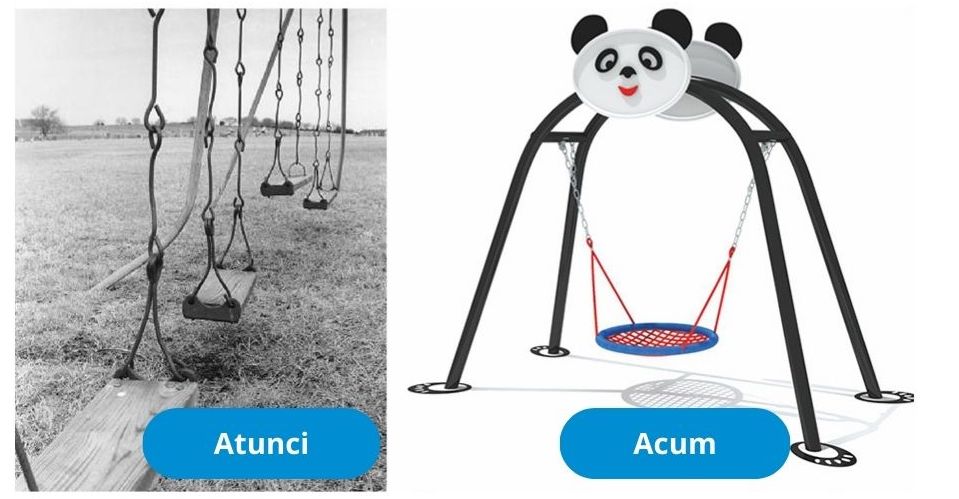
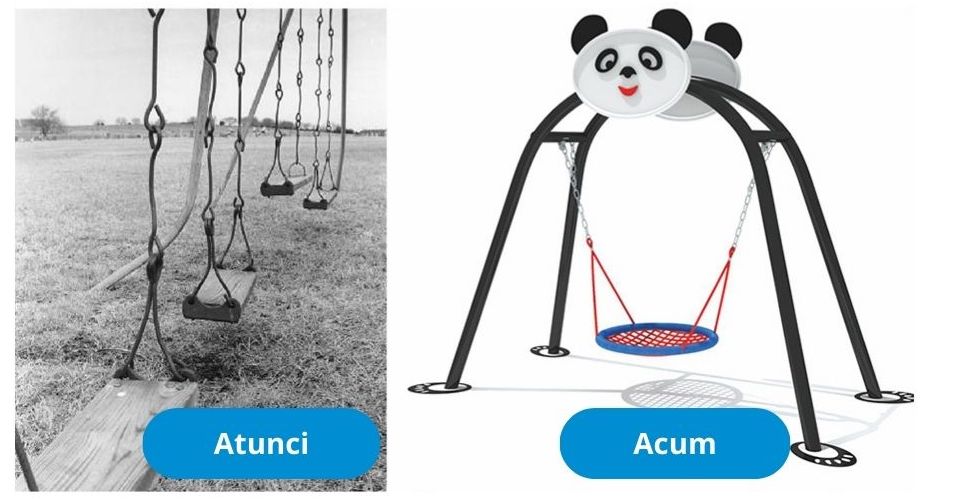
The need for play is vital in the era of sedentary lifestyles.
In a context where sedentary behavior and technology are risk factors for the physical and emotional development of children, parents are now much more interested in the quality of leisure time their children spend playing in specially designed spaces for their enjoyment. After all, physical activity, practiced frequently even from a young age, provides various benefits.
Play is crucial for the health of children, contributing to the development of muscle groups and strengthening the skeletal system. Furthermore, it helps improve flexibility and coordination, playing a significant role in preventing obesity. Studies also show that physical activity, especially time spent in a playground area, minimizes the risk of health problems associated with sedentary lifestyles, such as type 2 diabetes and cardiovascular diseases.
Physical activity also has a positive impact on mental health. Engaging in physical activities can help children improve their self-esteem and better manage the effects of social anxiety. Moreover, interaction is beneficial for enhancing social and emotional skills. Playgrounds are important for children's social development, offering them opportunities to learn cooperation, sharing, and interacting with peers of a similar age.
Modern playgrounds are much more inclusive.
Play should be accessible to all children, regardless of race, religion, culture, or socioeconomic status. Social inclusion is currently an extremely important concept for the cohesion of a modern community, and any developer should approach it with great responsibility during the design phase of a playground for children.
Furthermore, integrating equipment for people with disabilities into the playground is crucial, so that children with mobility difficulties can also enjoy interacting with other kids their age. This is vital to minimize the effects of stigmatization, ensuring that all members of the community can enjoy the right to a normal life.
The evolution of playgrounds in recent decades has brought about significant changes. Compared to playgrounds of the past, modern ones offer more advantages and amenities for children. If you are interested in setting up a modern playground, get in touch with Waterboyz specialists or explore the latest projects in our portfolio, detailed on our blog.
